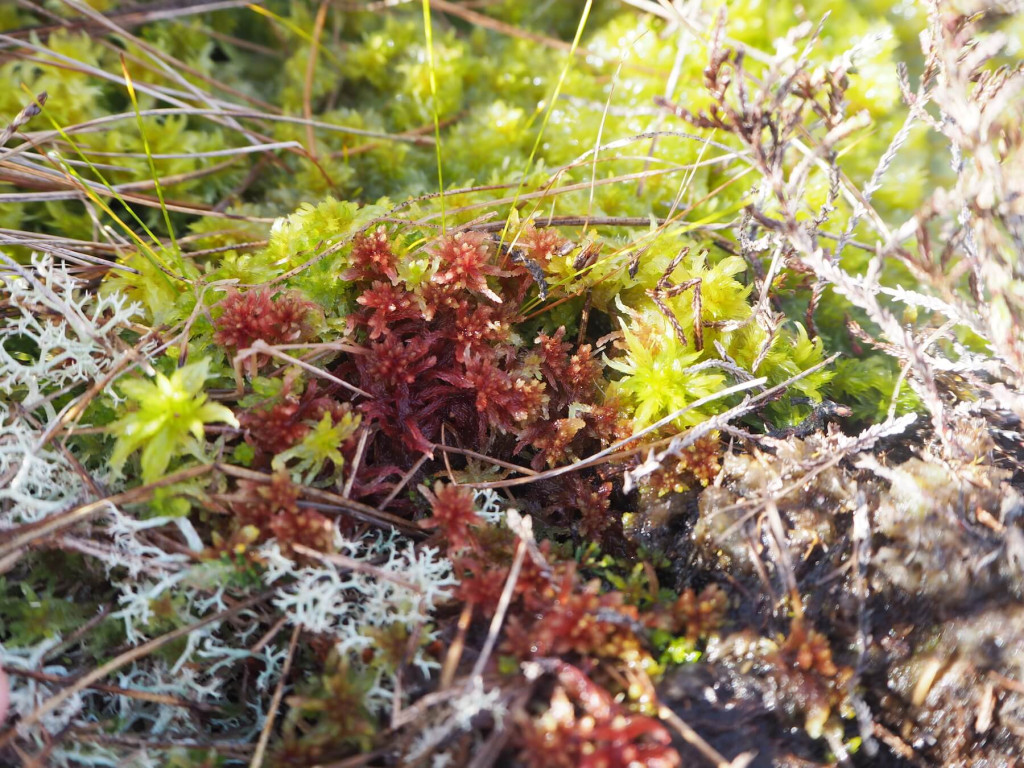Posted: 21/11/2025 • 5 minutes read
Peatland carbon: are the sums right?

Carbon storage may be the most talked-about feature of our amazing peatland ecosystems. Alongside water management and their unique ecology, peatlands store vast quantities of carbon by preventing the decomposition of the Sphagnum moss that forms peat over thousands of years. But exactly how much carbon does a peatland store – and what carbon emissions are produced by digging it up for horticulture?
This October the UK Government announced their intention to legislate an end to peat sales in the Carbon Budget and Growth Delivery Plan document published by the Department for Energy Security and Net Zero (DESNZ). Previously, questions about peat extraction have mainly been DEFRA’s to answer, but this update speaks to the cross-departmental nature of the issue of extracted peatlands.
Why is peatland carbon important?
It’s difficult to ascertain the total quantity of carbon emitted by extracted peatlands. Peatlands are degraded for many different reasons: extraction for horticulture, draining and erosion in agriculture, tree planting, and development. All these methods damage peatlands in different ways.
When raising awareness about the importance of peatlands, demystifying complicated data about how they work is important, which makes simple figures helpful. Research from the Centre for Ecology and Hydrology in 2019 put the total carbon emissions from degraded peatlands as 4% of the UK’s total greenhouse gas emissions – a clear figure that emphasises the scale of the damage compared to their area. In the announcement of their peat map earlier this year, the Government put it at 3.5%.
However, neither of these estimates reveal anything about the source of these emissions, extraction or otherwise, and the estimates are changing all the time. In DESNZ’s report, two new pieces of “currently unpublished” research have contributed to a decrease in the estimated greenhouse gas emissions from damaged peatlands, which have lowered the total emissions estimate for Land Use, Land Use Change, and Forestry by 0.68 MtCO2e (Megatonnes of CO2 equivalent emissions) per year.
What makes estimating peatland carbon difficult?
Calculations are further muddied by the fact that under carbon accounting protocols, as reflected by the Carbon Budget & Delivery Plan, carbon savings for peatlands (and for all actions related to agriculture, forestry, and land use) are calculated only for England. This can give rise to some misleading statistics in the carbon accounting data.
In England, peat extraction occurs only in a very small area, with Somerset being the only county with active peat extraction still occurring. Wales has no peat extraction at all. So on paper, ending peat extraction for horticulture hardly shows up at all on the carbon accounting bottom line.
But the impact of peat use in horticulture is still high. UK growers get through 760,000m3 of peat every year – enough to fill 300 Olympic swimming pools. Most of that peat comes from outside the borders of England, trucked in from Northern Ireland and Scotland; about 60% comes from mainland Europe. Imported peat from countries including Latvia and Estonia fills our supply chain either directly as bagged compost or in young seedlings imported from the Netherlands. None of this shows up as a carbon cost of gardening with peat in England.
For Scotland or Northern Ireland, whose peatlands supply about 40% of the UK horticulture industry’s peat, emissions from all that peat extraction go straight onto the debit side of the carbon accounts for the Scottish Government and Northern Ireland Executive – even though the horticulture industry in those two nations isn’t responsible for 40% of the UK’s peat use.
The 60% of carbon emissions from peat use in UK horticulture which originate in the Baltic States, Finland, northern Germany and elsewhere in Europe don’t show up anywhere in UK carbon accounting.
What does this mean for peat legislation?
The carbon emissions from extracted peatlands impact us all. It’s not good enough to say that peat use is the sole responsibility of one nation: especially when carbon accounting customs mean the true cost of peat use isn’t reflected in carbon budgets, allowing governments to dismiss the impact of continuing peat use. We must take collective responsibility for the damage to climate and nature that peat extraction is causing. That’s why we’re calling for UK-wide legislation to end the sale of peat – you can read more about our specific asks here.
Join the nationwide call, and demand that intended legislation to end peat sales is introduced in 2026. Take two minutes to add your voice and sign the petition now.


